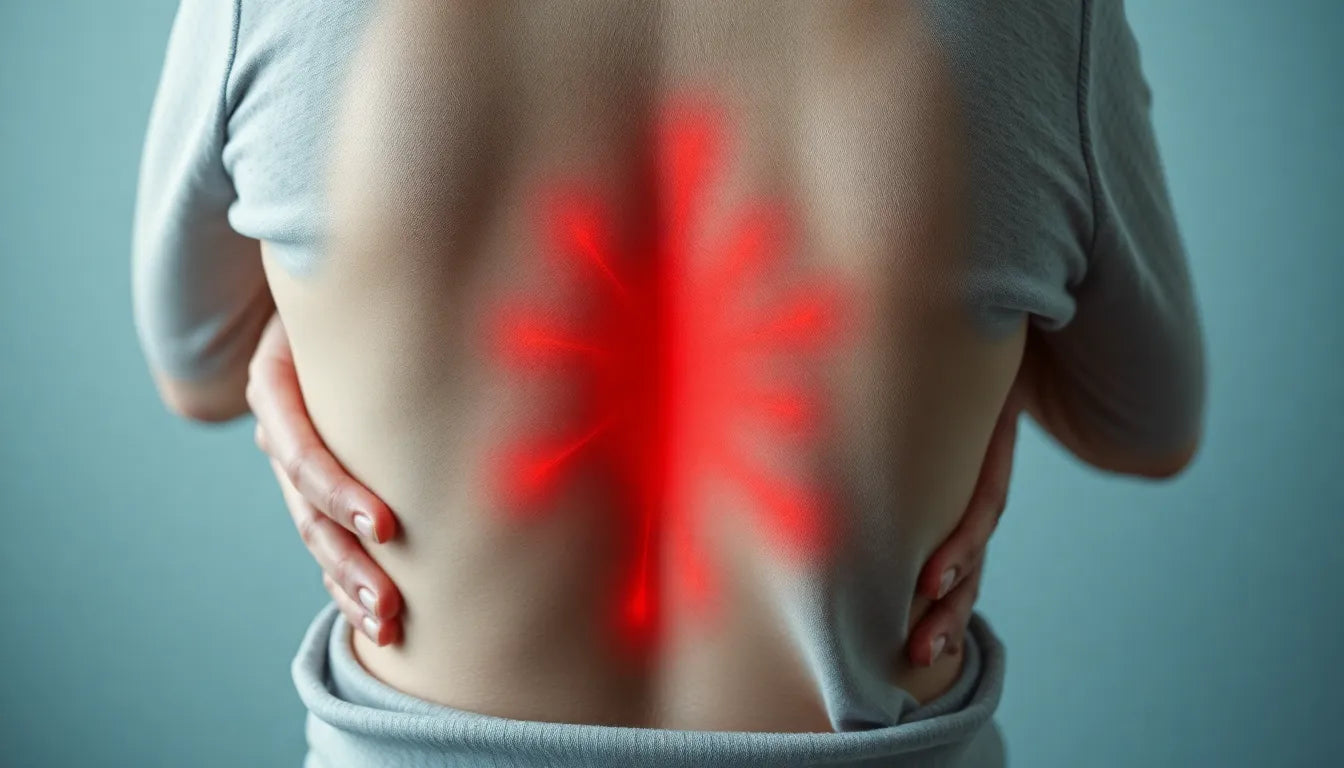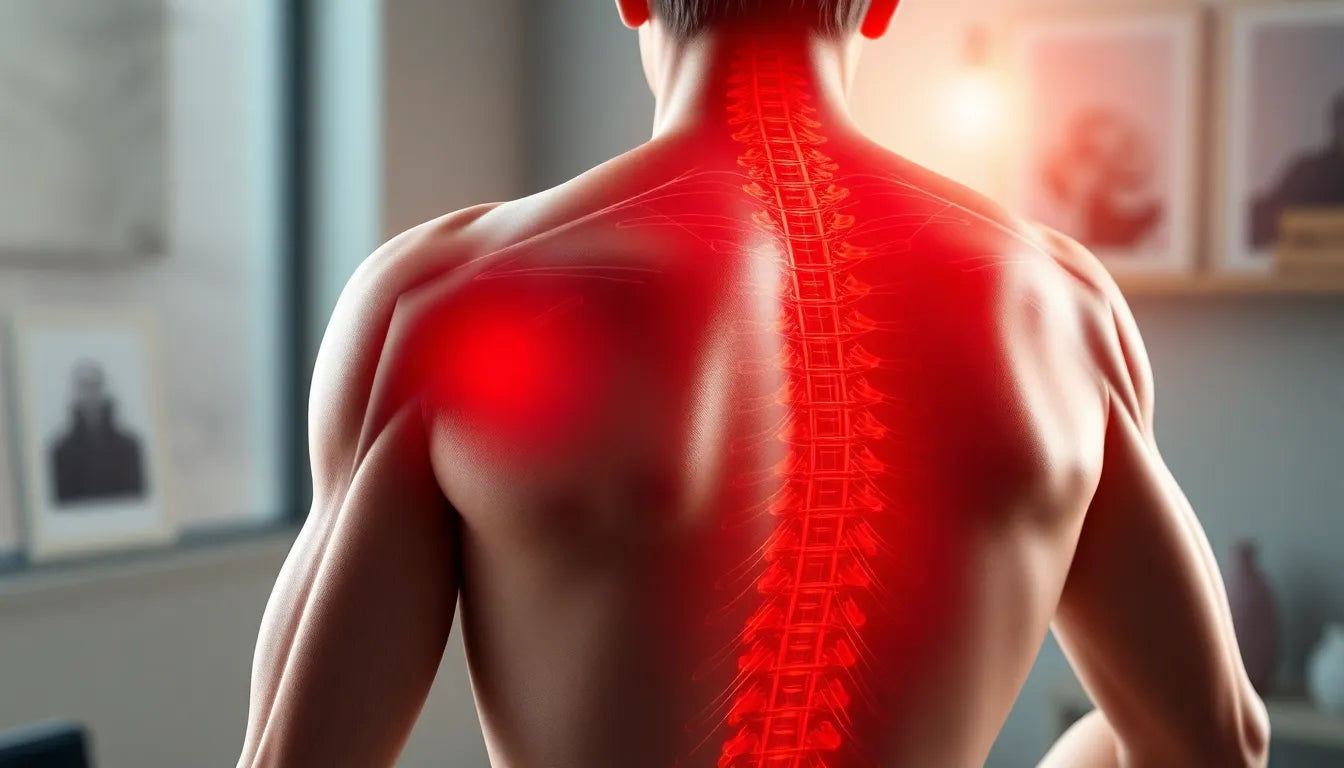Lower back pain is a common affliction that many people experience at some point in their lives. However, when this discomfort is localized to the left side, it can be particularly perplexing and disruptive to daily activities. Understanding the nuances of "ondt i lænden venstre side" is crucial for finding effective relief and managing the pain long-term. This specific type of pain can interfere with everything from simple movements to more demanding physical tasks, highlighting the need for a deeper exploration into its causes.
Dispelling myths about left-side lower back pain
There are many misconceptions surrounding the origins of lower back pain on the left side. A common myth is that such pain is an inevitable part of aging or solely the result of an acute injury. While these factors can contribute, they are not the only culprits. In reality, left-side back pain can stem from a variety of sources, including muscle tension, poor posture, disc herniation, or even structural imbalances within the body. Recognizing these potential causes is the first step towards effective management and relief.
The purpose of this exploration
This blog post aims to shed light on the hidden causes behind left-side lower back pain and to provide readers with a comprehensive understanding of potential solutions. By adopting a holistic approach, we will not only discuss immediate relief options but also delve into long-term management strategies. Whether you're dealing with acute discomfort or chronic pain, this guide will offer insights into addressing the root causes and implementing practical solutions that can significantly improve your quality of life.
As we embark on this exploration, it's important to approach the topic with an open mind. Understanding the broader context of your pain can lead to more effective treatment plans and prevent future occurrences. By identifying the underlying issues, whether they are related to ergonomics, lifestyle, or physical health, you can take proactive steps towards finding relief and maintaining a healthier back.
Identifying causes of left-side lower back pain
Understanding the root causes of "ondt i lænden venstre side" is essential for effective management and relief. One of the primary culprits is muscle tension, often exacerbated by poor posture. Many individuals spend prolonged hours sitting, whether at a desk or in front of a screen, leading to strain and tension in the lower back muscles. This tension can become localized to one side, particularly the left, if an individual consistently leans or twists in a particular direction.

Lumbar support belt
Adjustable back support belt for lumbar stability and pain relief.
Ergonomics plays a crucial role in preventing these issues. Ensuring that your work environment supports a healthy posture can significantly reduce the risk of developing muscle tension. Simple adjustments, such as using an ergonomic chair or positioning your computer screen at eye level, can make a substantial difference.
Disc herniation and physical strain
Another common cause of left-side lower back pain is disc herniation. This condition occurs when the soft inner gel of a spinal disc leaks out, irritating nearby nerves. Disc herniation can lead to sharp, localized pain on one side of the back, often accompanied by tingling or numbness in the leg. Statistics indicate that a significant percentage of adults will experience a herniated disc at some point, with risk factors including heavy lifting, obesity, and a sedentary lifestyle.
Studies show that individuals with physically demanding jobs or those who engage in improper lifting techniques are at higher risk of developing disc-related issues. Therefore, it is essential to practice safe lifting techniques and maintain a healthy weight to minimize the risk of disc herniation.
Structural imbalances and their impact
Structural imbalances within the body can also contribute to uneven stress and pain in the lower back. For instance, leg length discrepancies can cause the pelvis to tilt, leading to compensatory mechanisms that place additional strain on one side of the back. Sarasaxild.dk highlights how the body often compensates for these imbalances, which can result in chronic pain if not addressed.
Addressing these imbalances typically involves a comprehensive assessment by a healthcare professional, who may recommend custom orthotics, physical therapy, or specific exercises to correct the imbalance and alleviate pain.
Symptoms and diagnosis
Recognizing the symptoms of left-side lower back pain is crucial for timely intervention. Common symptoms include localized pain, tingling sensations, and reduced mobility, as noted by Minosteopat.dk. These symptoms can vary in intensity and may be exacerbated by certain movements or activities.
Diagnostic approaches often involve a combination of physical exams, imaging tests such as X-rays or MRIs, and consultations with specialists. A comprehensive assessment is vital to determine the root cause of the pain and to develop an effective treatment plan.
Case study: everyday challenges and solutions
Anodyne.dk provides a compelling case study illustrating a typical scenario of left-side back pain resulting from poor work ergonomics. In this case, the individual experienced chronic pain due to prolonged periods of sitting without adequate support. The intervention involved making ergonomic adjustments to the workspace and incorporating targeted exercises to strengthen the back muscles.
These adjustments not only alleviated the pain but also improved the individual's overall posture and comfort during work. This case underscores the importance of addressing ergonomic factors and incorporating regular physical activity as part of a holistic approach to managing left-side lower back pain.
Effective solutions and management strategies for left-side lower back pain
Addressing "ondt i lænden venstre side" requires a multifaceted approach that combines ergonomic adjustments, exercise, and potential medical interventions. By understanding and implementing these strategies, individuals can find both immediate relief and long-term solutions to manage their pain effectively.
Ergonomic adjustments
Improving workplace ergonomics is a crucial step in alleviating lower back pain. Simple changes can have a significant impact on reducing strain and promoting a healthier posture. Consider investing in an ergonomic chair that supports the natural curve of your spine, and adjust your desk setup to ensure your computer screen is at eye level. These adjustments can help distribute weight evenly and reduce pressure on the lower back.

Men's Posture Shirt™ - Black
Promotes posture with NeuroBand™ tech to reduce back and neck pain.
Exercise and physical therapy
Regular exercise is vital for strengthening the back muscles and enhancing flexibility. Smertefys.nu and Regionshospitalet Randers recommend exercises such as pelvic tilts, knee-to-chest stretches, and lumbar rotations. These exercises can be performed at home and are designed to target the muscles supporting the lower back, thereby reducing pain and improving mobility.
Physical therapy can also provide personalized treatment plans tailored to your specific needs. A physical therapist can guide you through exercises that address your unique condition, helping to improve strength and flexibility while minimizing pain.
Alternative and medical treatments
For those seeking alternative treatments, osteopathy offers a holistic approach to managing lower back pain. As suggested by Minosteopat.dk, osteopathy can help relieve tension and improve alignment through manual manipulation techniques. Additionally, medical interventions such as medication or surgery might be necessary for severe cases. Consulting with a healthcare professional can help determine the best course of action based on the severity and underlying cause of your pain.
Frequently Asked Questions
What are the most common causes of left-side back pain?
Left-side back pain is often caused by muscle tension, poor posture, disc herniation, or physical strain. Structural imbalances and improper ergonomics can also contribute to localized pain.
How can I prevent left-side back pain from recurring?
To prevent recurrence, maintain good posture, engage in regular exercise, and ensure your workspace is ergonomically set up. Incorporating stretching and strengthening exercises into your routine can also help keep your back healthy.
When should I see a healthcare professional?
If you experience persistent pain, numbness, or tingling that does not improve with home remedies, it is important to consult a healthcare professional. These symptoms may indicate a more serious underlying condition that requires professional evaluation.
Are there specific exercises I can do at home?
Yes, exercises such as pelvic tilts, knee-to-chest stretches, and lumbar rotations can be done at home to help relieve pain and improve flexibility. These exercises target the muscles supporting the lower back and can be incorporated into your daily routine.
Conclusion
Understanding the underlying causes of "ondt i lænden venstre side" is essential for effective management and relief. By exploring both immediate and long-term strategies, individuals can take proactive steps to alleviate pain and prevent future occurrences. Whether through ergonomic adjustments, exercise, or professional intervention, addressing the root causes of pain can significantly improve your quality of life.
Kilder
- Bodypeak.dk. "Årsager til lændesmerter".
- Aarhus Osteopati. "Behandling af lændesmerter".
- Aalborg Rygklinik. "Ondt i iskiasnerven".
- Din Flexible Sundhed. "Akutte lændesmerter".
- Sarasaxild.dk. "Ondt i lænden".
- Sundhed.dk. "Lændesmerter - Lave rygsmerter".
- Smertefys.nu. "Problematikker - Ondt i lænden".
- Spangsbergterapi.dk. "Ondt i lænden - Kranio-sakral terapi".


















